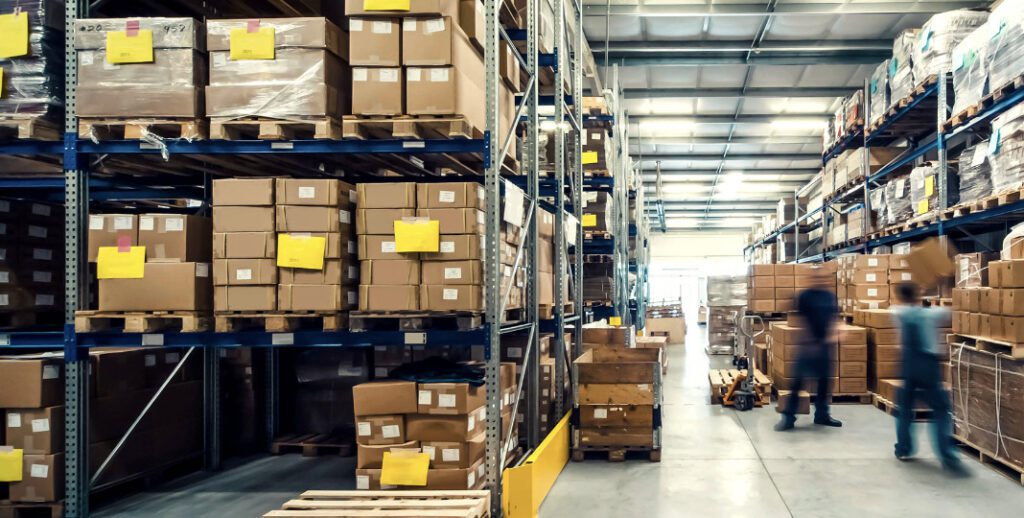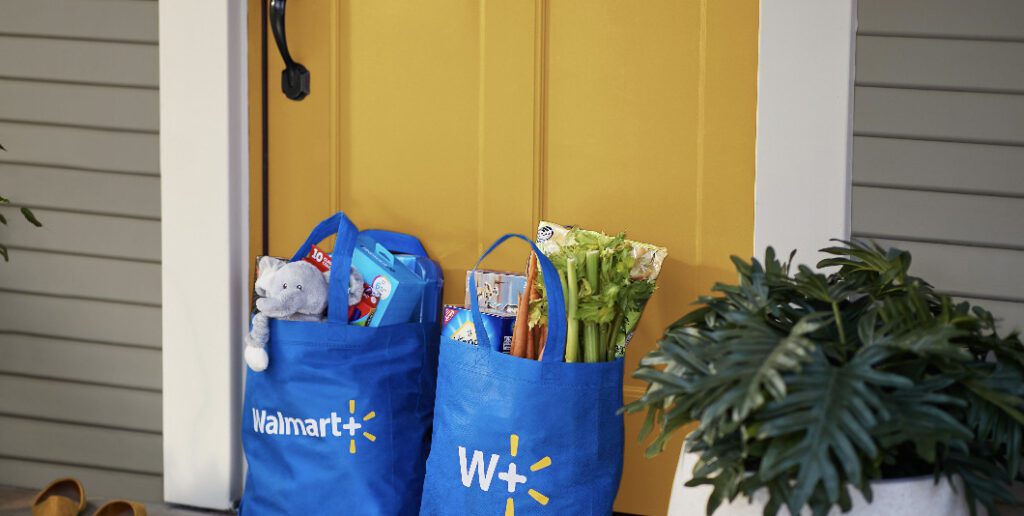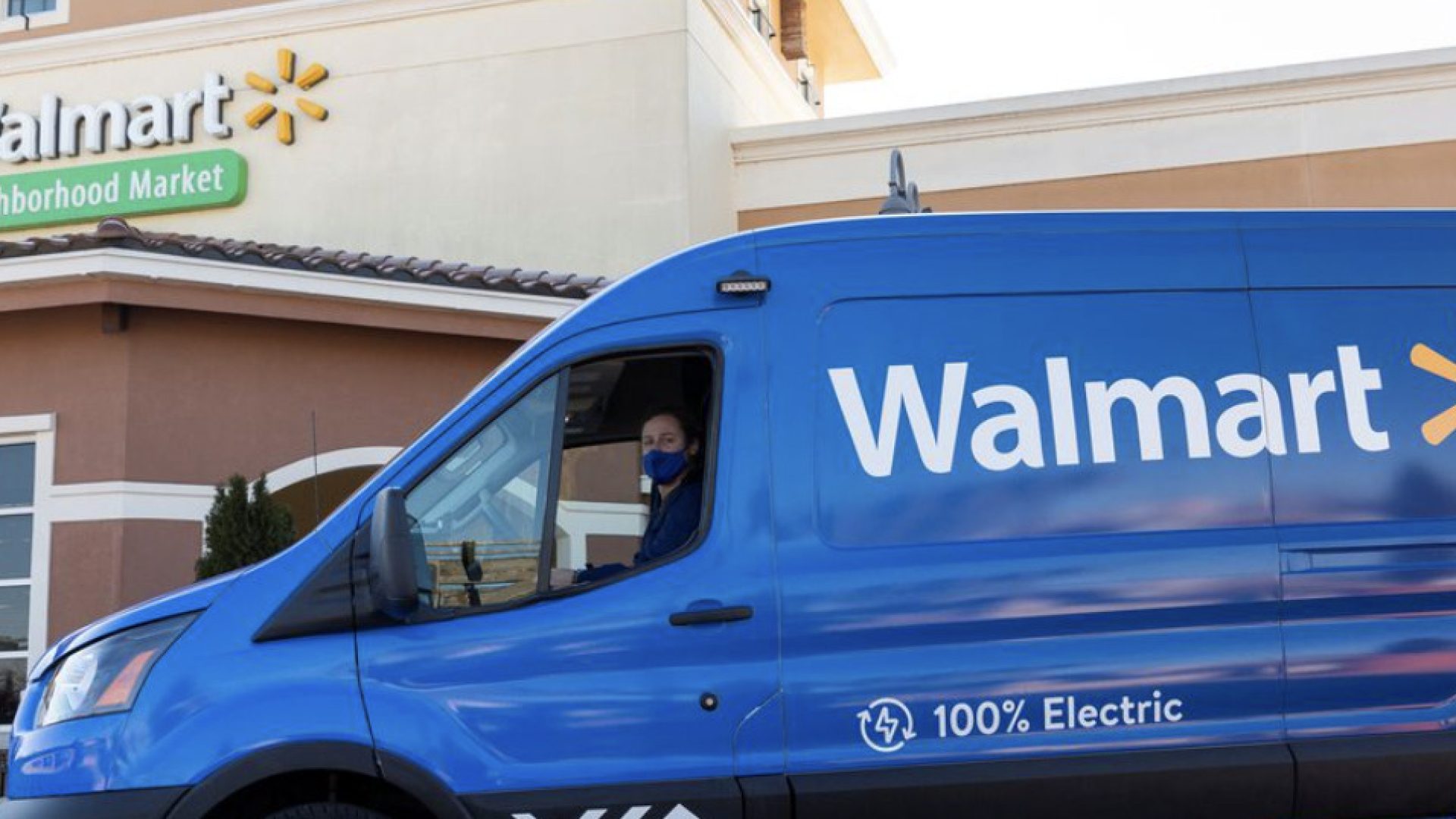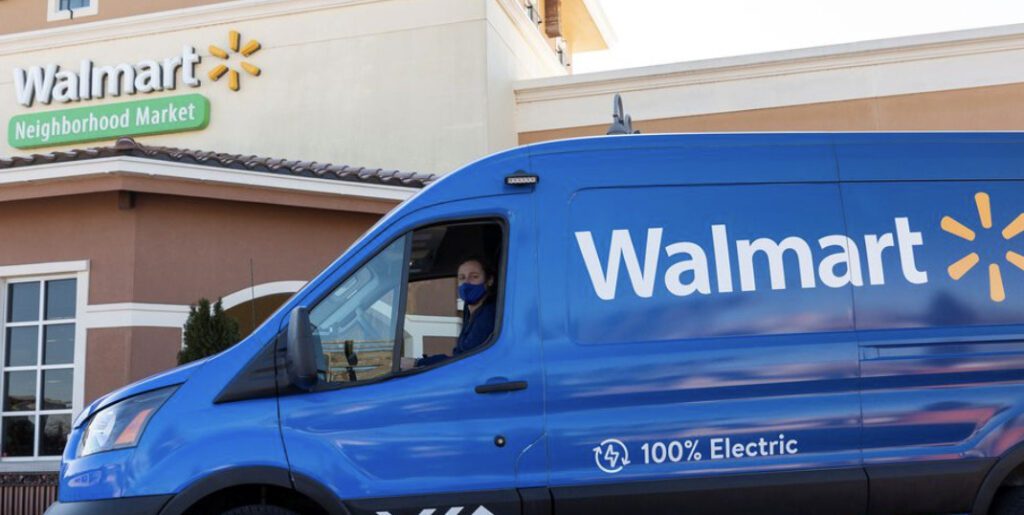In the world of online orders, fast and efficient delivery is the key to success. Walmart understands this well, which is why they fulfill around 50% of their orders from their own stores. This strategic move not only reduces the distance traveled to deliver packages but also enables them to offer rapid delivery times. The convenience of Walmart’s store locations plays a significant role in achieving this feat, as their stores are conveniently situated within 10 miles of nearly 90% of the U.S. population. By leveraging these stores as pickup points and for store-fulfilled delivery, they efficiently cater to the needs of their customers.
Walmart’s dominance in the online grocery sector is impressive. With a significant portion of their e-commerce volume coming from online grocery, they have identified a category perfectly suited for fulfillment from their stores. However, it’s important to note that utilizing stores for fulfillment has its limitations. Walmart’s extensive product selection, with over 100 million items available for sale online, goes beyond what can be stocked in their stores.
Consequently, there is a division in their sales channels, with 50% originating from their stores, including grocery and first-party products, while the remaining 50% comprises a mix of marketplace and first-party items residing in both Walmart and seller warehouses.
While Walmart has effectively utilized their store network, Amazon faces a different challenge. Although Amazon pursues a similar goal of reducing travel distances, they lack the advantage of a widespread store network. As a result, they are compelled to rethink their approach to fulfillment warehouses. Amazon’s CEO, Andrew Jassy, acknowledged the merits of regionalization in their operations.
By focusing on regionalization, Amazon achieved a 20% reduction in touches for delivered packages, a 19% decrease in miles traveled, and an impressive 76% increase in deliveries fulfilled within the region. This success was made possible by their same-day fulfillment facilities, which mirror the benefits provided by Walmart stores—proximity and a selection of popular products.
The recent years have been an intense period for both Amazon and Walmart. The pandemic led to a strain on fulfillment capacity, and later, an excess of it. However, now they are fully committed to streamlining their operations to ensure swift delivery to their customers while also managing costs efficiently. Logistics, for these retail giants, play an integral role and are considered an essential part of the product offering itself. They understand that meeting the needs of the online sellers community requires not only the right products but also a well-executed delivery strategy.
Customers in the ecommerce world crave fast and efficient delivery, and Walmart is delivering on that front. Their approach to fulfilling online orders sets them apart from the competition. By fulfilling half of their orders from their own stores, they are reducing travel distances and achieving faster delivery times. Walmart’s extensive store network, with locations within close proximity to 90% of the U.S. population, positions their stores as convenient pickup points and efficient delivery hubs. They have strategically tapped into the online grocery segment, recognizing its suitability for store-based fulfillment. This, in turn, enables them to offer a broader catalog of products that go beyond what can be stocked in their stores.
In the realm of online grocery, Walmart reigns as a dominant force. Their e-commerce volume is significantly driven by online grocery sales, a category that seamlessly aligns with their store-focused fulfillment strategy. However, it’s important to note that Walmart’s product selection extends far beyond the offerings available in their physical stores.
With over 100 million products available for sale, Walmart relies on their warehouses, including the marketplace, to meet the demand for a diverse range of merchandise. This division of sales channels results in 50% of their sales originating from their stores, encompassing grocery and first-party products, while the remaining 50% encompasses a mix of marketplace and first-party products fulfilled by both Walmart and seller warehouses.

For Amazon, the journey to reduce travel distances is a complex one due to the absence of a widespread store network. Consequently, they are compelled to explore alternative fulfillment strategies. Regionalization has emerged as a viable solution within Amazon’s operations. By adopting a regionalized approach, Amazon has witnessed impressive results. Their efforts have led to a 20% reduction in touches for delivered packages, a 19% decrease in travel mileage, and an incredible 76% increase in regional deliveries fulfilled. These accomplishments have been made possible by Amazon’s same-day fulfillment facilities which offer the same advantages found in Walmart’s stores, such as proximity to customers and a well-curated selection of in-demand products.
The past few years have presented numerous challenges for both Amazon and Walmart. Initially, the pandemic strained their fulfillment capacities, leading to under-capacity. However, as the situation evolved, they found themselves grappling with the opposite problem—over-capacity. Nonetheless, these retail powerhouses have realigned their focus on expediting product delivery while simultaneously optimizing cost efficiency.
They recognize that logistics represent an integral aspect of their product offerings. To cater to the ecommerce seller community effectively, they acknowledge that success lies not only in providing quality products but also in the optimization of their delivery strategies.
Online sellers in the vast realm of ecommerce know that fast and efficient delivery is a vital component of a successful business. Walmart understands this principle and has adopted a forward-thinking approach to fulfill their online orders. By utilizing their extensive store network, they have accomplished the remarkable feat of fulfilling 50% of their orders from their own stores. This strategy not only reduces the distance traveled to deliver packages but also allows for shorter delivery times. The key to their success lies in the strategic placement of their stores, with nearly 90% of the U.S. population residing within a 10-mile radius of a Walmart store. This geographical advantage enables them to leverage their stores as convenient pickup points and efficient delivery hubs to satisfy the needs of their customers.
The dominance of Walmart in the online grocery market is undeniable. A substantial portion of their e-commerce volume is derived from online grocery sales, which is uniquely suited for store-based fulfillment. However, it is essential to consider the limitations that arise when relying on stores for fulfillment. Walmart offers a vast selection of products, with over 100 million items available for purchase online. This extensive catalog surpasses what can be accommodated within their physical stores. Consequently, Walmart divides its sales between different channels, with 50% originating from their stores, including grocery and first-party products, while the other half incorporates a combination of marketplace and first-party products. These items are fulfilled by both Walmart and seller warehouses to cater to the diverse needs of their customers.
Amazon, being a prominent player in the ecommerce market, faces its own unique challenges when it comes to reducing travel distances. Unlike Walmart, Amazon lacks an extensive network of physical stores to support their fulfillment efforts. As a result, they have been reevaluating their approach to warehouse fulfillment. Amazon’s CEO, Andrew Jassy, recognizes the effectiveness of regionalization as a solution within their operations.

Their regionalized approach has yielded impressive results, including a 20% reduction in touches for delivered packages, a 19% decrease in travel distance, and a remarkable 76% increase in regionally fulfilled deliveries. By leveraging their same-day fulfillment facilities, Amazon replicates the advantages offered by Walmart’s physical stores, such as proximity and a curated selection of popular products.
For both Amazon and Walmart, the past few years have been defined by challenges in meeting fulfillment demands brought on by the pandemic. These challenges ranged from under-capacity to later transitioning into periods of over-capacity.
However, now both companies have refocused their efforts on efficiently delivering goods to their customers while maintaining cost-effectiveness. They understand that logistics are an integral part of their product offerings. Success for these giants in the ecommerce space relies not only on quality products but also on the optimization of their logistics strategies—a realization that resonates strongly within the ecommerce seller community.
Ecommerce sellers understand the importance of swift and reliable delivery, and Walmart is responding to those needs. By fulfilling half of their online orders from their own stores, Walmart sets a new standard for efficient delivery. Their innovative approach not only minimizes the distance traveled to deliver packages but also allows them to offer lightning-fast delivery times. Thanks to Walmart’s strategic store locations, which are conveniently situated within 10 miles of almost 90% of the U.S. population, they can utilize their stores as convenient pickup points and delivery hubs. With this approach, Walmart effectively caters to the demands of their customers in the ecommerce sector.
Walmart’s dominance in the online grocery market is remarkable. A significant portion of their e-commerce volume is attributed to online grocery sales—an area ideally suited for their store-centric fulfillment model. However, it’s noteworthy that relying solely on stores for fulfillment creates certain limitations.
The vast product catalog Walmart offers, encompassing over 100 million items available for online purchase, exceeds what they can physically hold in their stores. To bridge this gap, Walmart divides their sales channels, with 50% originating from their own stores, including grocery and first-party products, while the other half comprises a mix of marketplace and first-party items, fulfilled by both Walmart and seller warehouses.
The past few years have been a rollercoaster ride for both Amazon and Walmart in terms of fulfillment capacity. Initially, the pandemic sparked an under-capacity scenario, which later transitioned into a situation of over-capacity. Nevertheless, both retail powerhouses have now placed their focus squarely on efficiently delivering goods to customers while keeping costs at bay.

They’ve come to understand that logistics are not mere auxiliary aspects but rather an integral part of their product offerings. This understanding resonates strongly within the ecommerce seller community, as they recognize that achieving success requires not only top-notch products but also optimized delivery strategies.



